Before visiting Rani Ki Vav, I use to believe that stepwells were made to store rainwater. But after visiting this site, now I know that stepwells were also built to make other kingdoms jealous from one’s might and power.
I have seen stepwells from New Delhi to Hampi, but I have not seen such a beautiful one like Rani Ki Vav. This Vav was built by Queen Udayamati to honour his dead husband Bhima I, who is a beloved king from Chaulukya Solanki dynasty of Gujarat.

Rani Ki Vav
My day 2 in Gujarat
After visiting Adalaj Vav and Modhera Sun temple in Mehsana, I traveled 35 km north for Patan. It’s a big city in Gujarat and on its northern boundaries, I saw the biggest stepwell site I have ever seen since Chand Baori.
There is a small entry fee of Rs 30 and free parking outside the stepwell complex. The local authorities have done a remarkable job to develop a lovely garden around the Vav.

Rani Ki Vav Entrance Board
So from entry gate, I walked like 50 odd steps, and this is my first view of Rani Ki Vav.
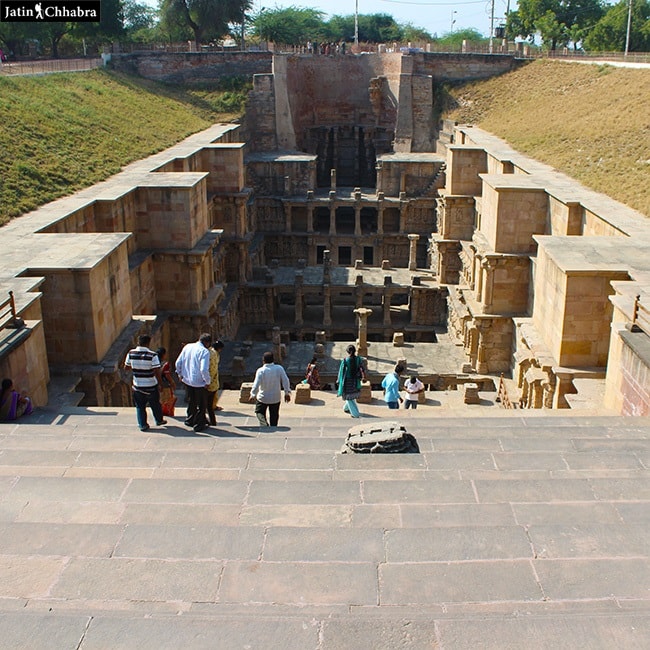
Entering Rani Ki Vav
Rani Ki Vav is huge. The Vav has more than 800 sculptures, 27 meters deep, 64 meters long and 20 meters wide. From the third floor, there are like 100’s of sculptures on both side walls, and at the last level, the Vav has more sculptures than any other museum in India.
Simply Incredible.
The Broken Pillars of Rani Ki Vav
Rani Ki Vav is 27 meters deep, and on the first three floors, there are many broken pillars.
The first three levels which I climbed down are not as glamorous as the later ones, but the presence of these decorated columns here are also impressive. I assume that earlier these floors must be covered, and locals people use to come here for religious ceremonies or even for some chit chat…
Here are some pictures of the top floors of Rani Ki Vav.

Upper floors of Rani Ki Vav
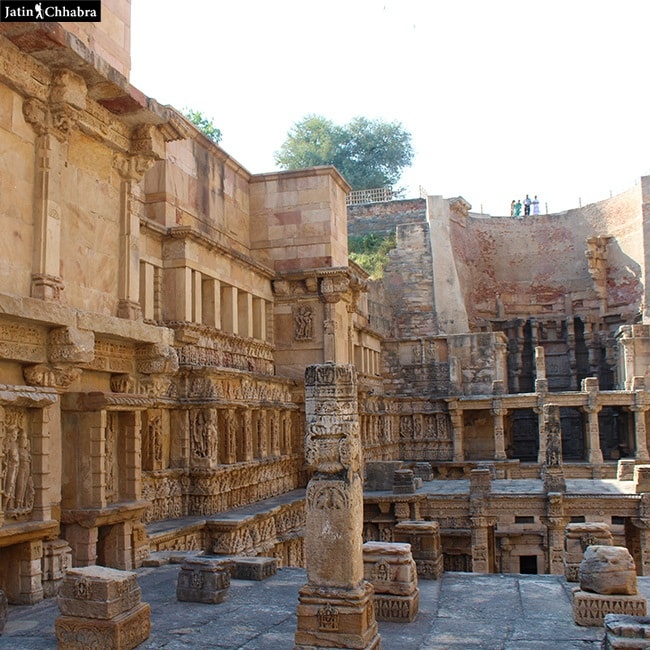
Inside Rani Ki Vav

Pillars of Rani Ki Vav

A decorated Pillar of Rani Ki Vav
The mind blowing Architecture of Rani Ki Vav
I had done some research before visiting Rani Ki Vav. There are like 800 statues of Hindu mythology like the Dashavatar (The ten incarnations of Lord Vishnu), Shiva, Brahma, Mata Durga, Mata Kali, King Ram and other Vedic gods like Agni Dev (God of Fire), Indra Dev (God of Rain) and many Apsaras (angels).
By just looking at them I was so surprised that what amazing craftsmanship was available in the 11th century who build these marvellous statues. Just have a look at few pictures of these mind blowing sculptures on the lower floors/ levels of Rani Ki Vav.

Goddess Kali (Goddess of Death)

King Rama of Ayodhya

Kalki Avatar of Lord Vishnu

Mother Durga killing Mahisasur
A heaven for any art lover.
The Final Floor of Rani Ki Vav
The foundation floor of the Vav is the best place to be but it’s not allowed for regular tourists Though, I got a clear view of this part of the Vav.
The reason that no one is allowed here because in 2001 Gujarat earthquake, this section of the Vav was damaged, though it survived. There are more than 300 sculptures and a 30 km tunnel which leads to Sidhpur City. Here are some pictures which I look from this part of Rani Ki Vav.

Lower levels of Vav

Vishnu on Sheshnag – At the last wall of the Vav

Sculptures at the lower level
Awards won by Rani Ki Vav
Rani Ki Vav is a UNESCO World Heritage site (announced on 22-June-14) & also has the honour of being the cleanest Iconic Place in India by Indian Sanitation Conference (INDOSAN) 2016. PM Modi himself gave this award, and even I will say that Rani Ki Vav is one of the cleanest stepwell sites I have visited in the last two years.

Indosan 2016
Well, there are many written facts which suggest that Rani Ki Va is around 1000 year old, but I was surprised to hear that this Vav was founded in 1980 while digging the archaeological sites near Saraswati River.
How to reach Rani Ki Vav
I started my tour from Ahmedabad which is the biggest city near Patan. Never the less one can also catch a direct train to Patan as its a big city. But if you are planning to travel by air, then you need to land at Sardar Vallabhbhai Patel International Airport, Ahmedabad.
From here you can hire a cab for a day which will cost between Rs. 2250 to Rs. 3000, along with a driver. One can also catch an intercity bus, but I would suggest to hire a cab and visit Adalaj vav in Gandhinagar, Modhera Sun temple in Mehsana and then Rani Ki Vav at Patan.
Timing and Ticket cost of Rani Ki Vav
The cost of a ticket is Rs 30 per person and timings of Rani Ki Vav is from 8 AM to 7 PM, and it’s open all days, except Maha Shivaratri.




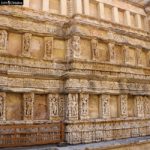

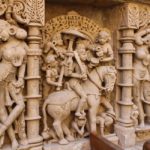
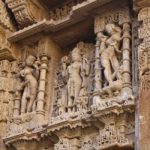








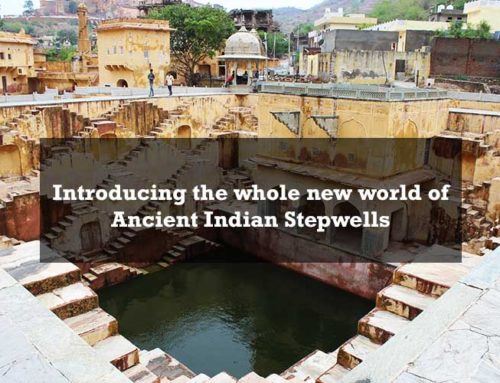

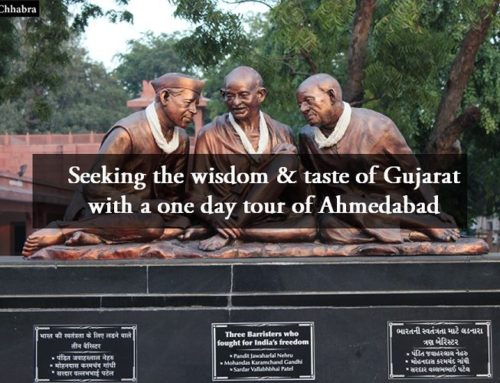

Wow! The pictures are so incredible!
All thanks to this great site :)
This is breathtaking! I wish I will get there one day. You have a lot of amazing places to be discovered in India
Hi Anamaria, Rani Ki Vav is really a breathtaking site. Even I was shocked to see the size of this stepwell.
Yep there is so much to see in India and I have, till now travelled 2500 km in last 8 month :) and not just the top of an iceberg. Also saw your blog, looks nice. You are from which country?
To be honest I never heard about Rani Ki Vav before but after looking at your photos I would love to visit one day! Yours photos are wonderful
That would be great. There are many sites like Rani Ki Vav in Gujarat and India.
Wow, such beautiful architecture for a stepwell! India is definitely one of the best places in the world for architecture, and this only reinforces that notion – some countries don’t have designs this intricate in their finest palaces, castles and temples. A great thing to draw attention to – thanks :-)
Thanks Joe. India is full of such beautiful sites.
Always amazes me to see those delicately and intricately etched pillars and architecture in general! There’s just so much to discover in India! I’ve never been – but it’s on the list! For sure!
Hi Sarah, India is full of sites with amazing attractions like Rani Ki Vav. Hope you will visit India soon :)
Mr. Jatin, Thank you for bringing out the beauty of Rani ki Vav. Your photographs are sharp and excellent. I anticipate many such awesome photos of our monuments.
Thanks Rajadurai – Well the site itself is so beautiful, nothing to do with the camera :)
Hi jatin..which camera do u use ..the pics are breathtaking
Thanks Vedant. I use Canon 1300 D.
I and my group have taken up Patan for 12th Standard History project. Seriously its a beautiful place to study and research about.
But is there any water in the well? No photograph showing waters of the well are here.
Nope, there isn’t no water here, as now this vav has been turned into a tourist site. under ASI.